Reviews
Ideas, Experimentation, and Pertinent Questions at the 2016 Bergen Assembly
Take your time, there's much to see in Bergen.
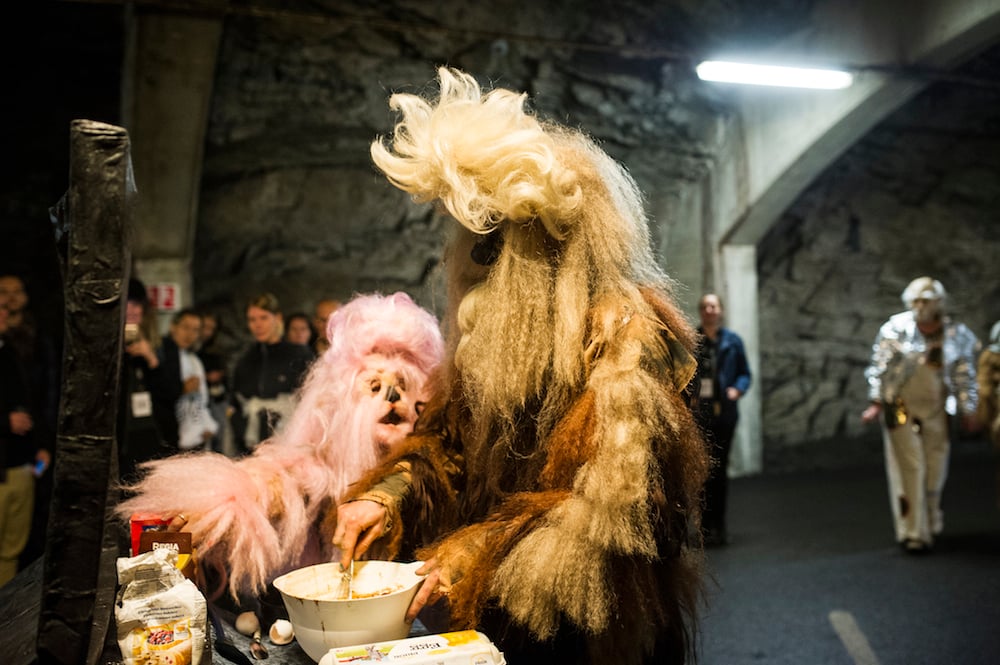
Take your time, there's much to see in Bergen.

Amah-Rose Abrams

The rain fell in buckets and members of the art world “flooded” to Western Norway for Bergen Assembly, the city’s triennial, this past weekend.
Bergen Assembly, now in its second edition, has always focused on artistic and curatorial practices that challenge what a biennial should consist of and represent. This year is no different, with a conceptual framework born out of deep artistic investigation and research: a three-columned program and a “slow biennial” concept see all aspects of Bergen Assembly as culminations of long periods of exploration and study.
“For Bergen Assembly, experimenting and testing new ways of doing things within the biennial format is one of the core goals and this edition really takes this task seriously with three different artistic propositions,” said triennial director Haakon Thuestad at the opening press conference.
Run by a team of eleven people, made up by the two directors of the Praxes Centre for Contemporary Art, Rhea Dall and Kristine Siegel; academic collective freethought; and electronic musician and artist Tarek Atoui, the separately configured programs are staged around the city, culminating in a series of events taking part over the next four weeks in Bergen.
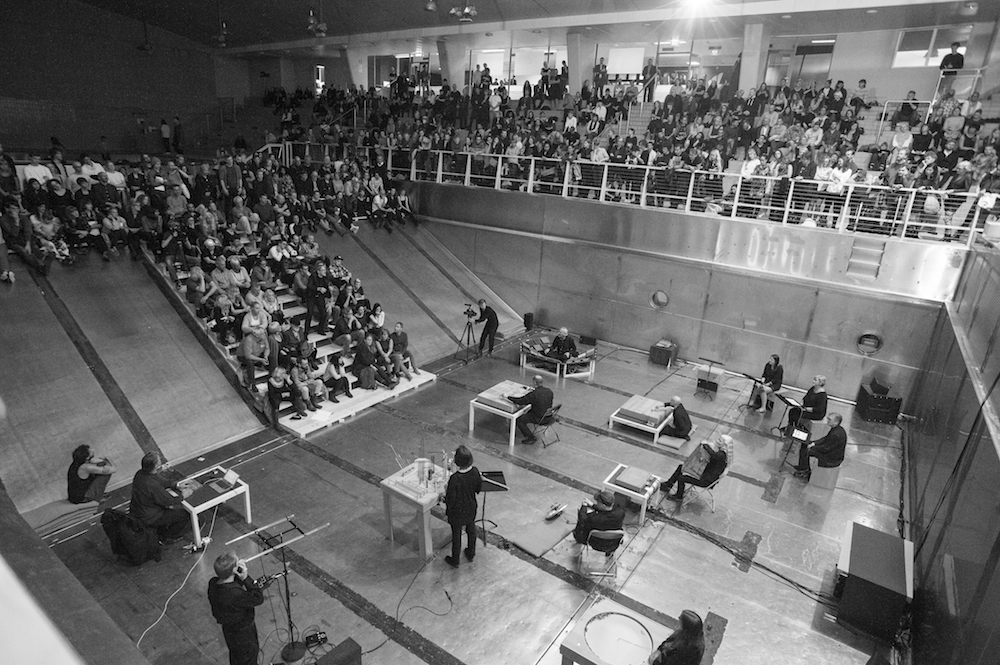
Tarek Atoui and collaborative performing Within I (2016) at Sentralbadet. Photo courtesy Bergen Assembly
Atoui’s exhibition “Infinite Ear” consists of a series of innovative installations and a small orchestra of instruments that can be experienced by both the hearing and the deaf.
Praxes have spent a “cycle” of their practice (their previous cycle was with Chris Evans and Rimini Protokoll) working on long term projects with artists Lynda Benglis and Marvin Gaye Chetwynd, which have unfolded throughout the year.
Their investigation of Benglis’s work has been divided into three parts: there are two exhibitions—“Double Albatross” and “Glacier Burger”—and a ceramics conference, “Slithering Green,” which took place in April. In addition, there are two shows currently running as part of the biennial, “Lynda Benglis: On Screen,” showing three of Benglis’ film works at Bergen gallery Entrée, and the other is the group show “Adhesive Products” at Bergen Kunsthall. It is safe to assume that residents of Bergen now count among the foremost connoisseurs of Benglis’s work.
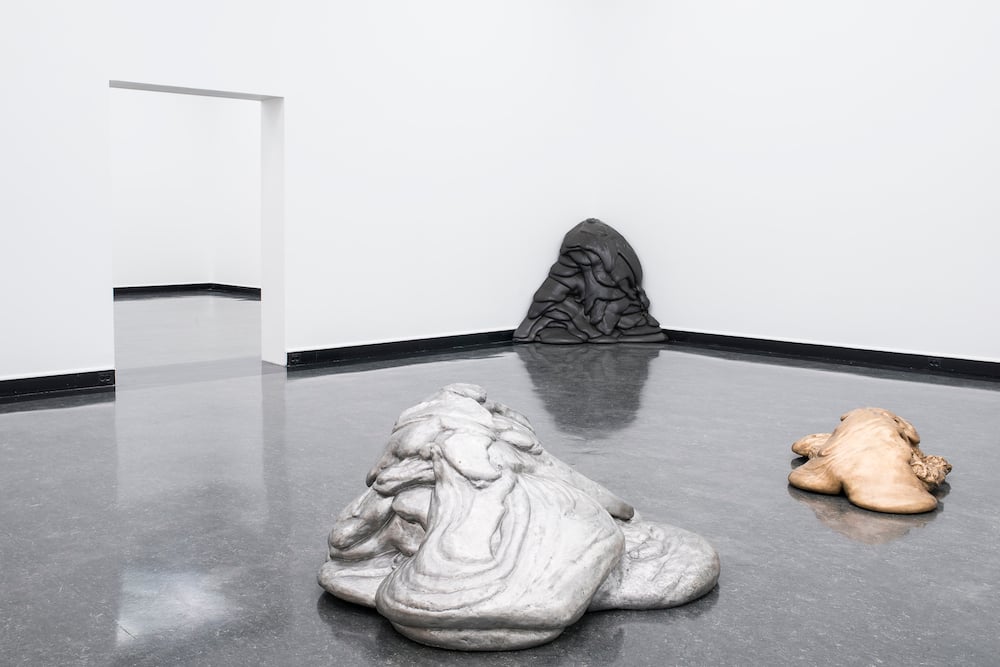
Foam works by Lynda Benglis as part of “Adhesive Products” at Bergen Kunsthall. Photo courtesy of Bergen Assembly
During opening weekend, Chetwynd performed The Cell Group (Episode Two)—a sequel to The Elixir App (Episode One)—a performance that took elements from unique or strange technological advancements and senior citizens from the artistic community in Bergen.
The Cell Group took place in a bunker, which has now been repurposed as a parking garage. Cut into the rock at the base of the seven mountains that surround the city, the space takes on the appearance of a group of caves. We, the audience, were led through these cavernous, branching tunnels, past a series of scenes: one from a cooking program watched and mimicked by lions; then the sect from the previous performance, The Elixir App, chanting “insect protein” in Norwegian and clad in t-shirts designed with some of the senior artists of Bergen, bearing slogans such as “I’m not gay but $20 is $20”; and lastly, a colorful interpretation of Outkast’s Hey Ya!. We were then ejected back into the rainy afternoon with nothing but a vague recollection and a smile.
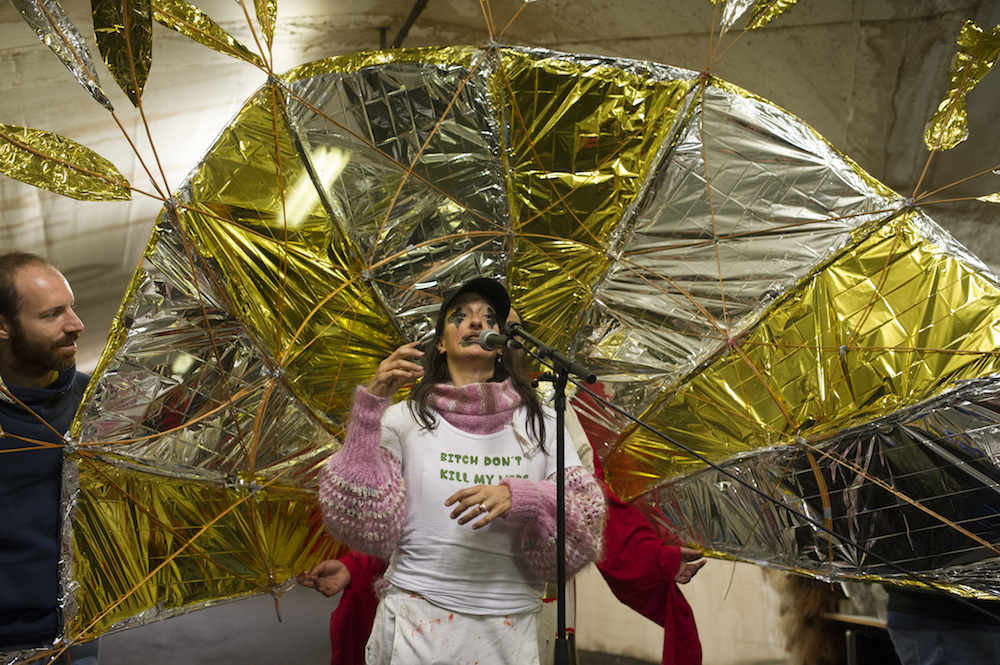
Marvin Gaye Chetwynd performing in Cell Projects (2016). Photo courtesy Bergen Assembly
Chetwynd is also showing in a static exhibition of items from past performances and films made of footage from such happenings, including her rendition of Michael Jackson’s Thriller.
Fans of Chetwynd’s work will be thrilled to see not only film interpretations of her work but also characters from some of her earliest performances alongside more recent incarnations. Produced in conjunction with Praxes, both Rhea Dall of Praxes and Chetwynd credited the slow biennial process with facilitating this unusual, static exhibition of her work.
“I think there’s something to do with me Kristina and Rhea really getting on well so they asked me to join in with something they were doing in Berlin with Praxes a year before,” Chetwynd told artnet News, adding that she was weary of showing what could be considered props as art.
“I think on one hand I just let them dream something up, because I trusted them but on another level I wanted to actually come and help.”
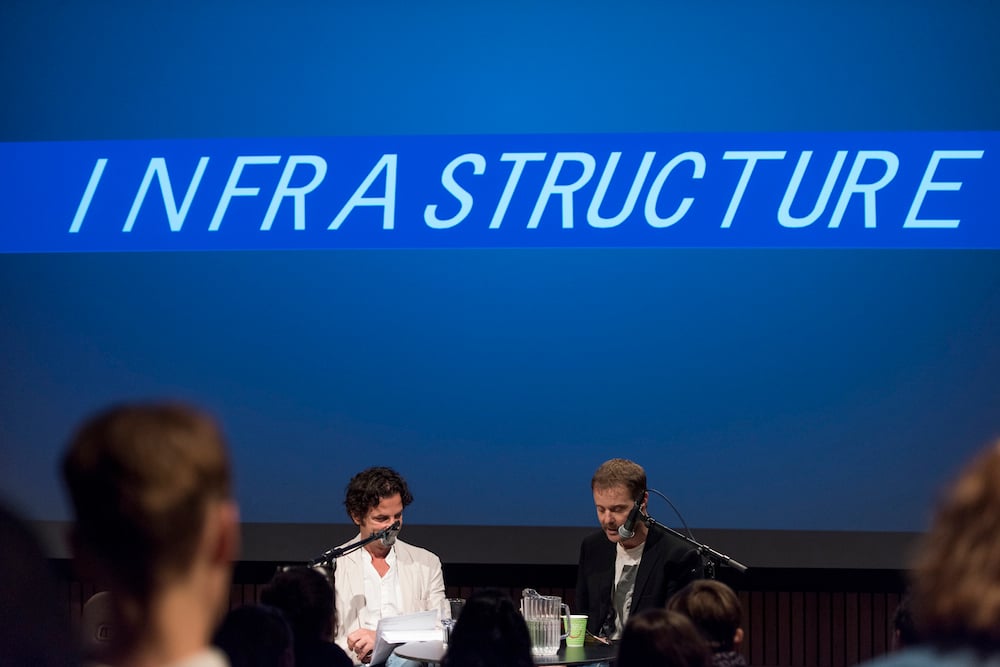
Freethought’s Infrastructure Summit. Photo courtesy Bergen Assembly
However, the third and most layered and complex column of this year’s Bergen Assembly is the freethought program that, in itself, is made up of many elements: the multifaceted “Museum of Burning Questions,” situated at the old Fire Station and firemen’s union in Bergen; and “The Infrastructure Summit”, which is a culmination of freethought’s—who are Irit Rogoff, Stefano Harney, Adrian Heathfield, Massimiliano Mollona, Louis Moreno, and Nora Sternfeld—investigation of and research into notions and systems of infrastructure.
The Museum of Burning Questions contains the traditional exhibition, “The Shipping and The Shipped,” featuring thought-provoking film and installation works by Ranjit Kandalgaonkar, Arjuna Neuman, and Wu Tsang. Also on view as part of the Freethought program is the short Delete Beach (2016) by Phil Collins, a fun, dystopian Anime film about a future in which oil is a class A drug.
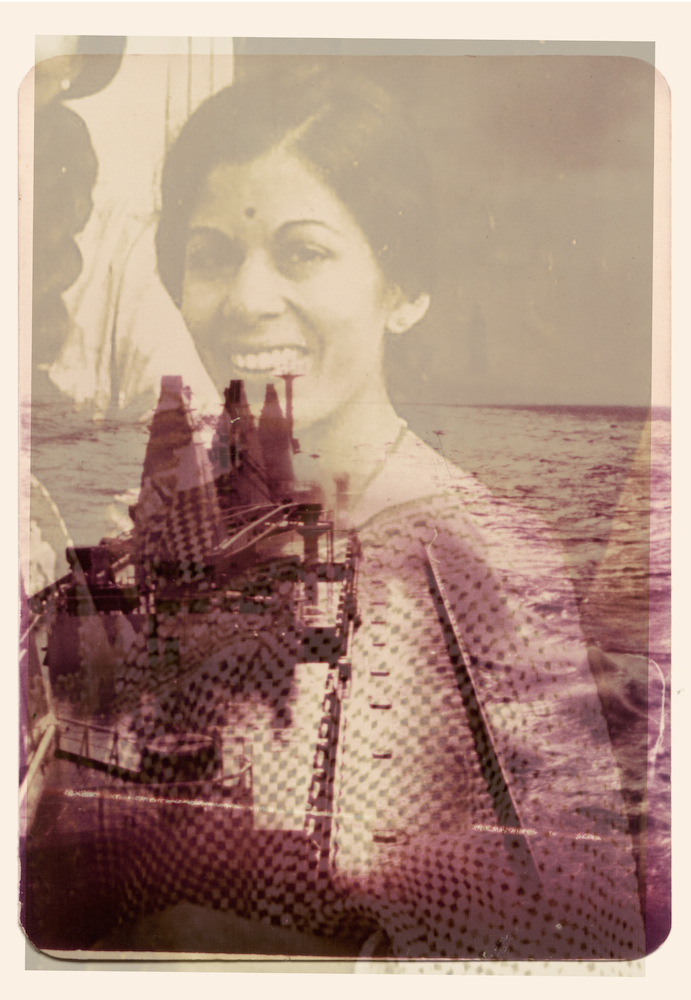
Ranjit Kandalgaonkar Home In The Wake of Shipping Infrastructure (2015). Photo courtesy Bergen Assembly
Freethought’s summit was a complex endeavor combining performative elements with a conference format addressing aspects of Infrastructure, ranging from the passport system to the increasing use of anthropology in corporate business. A little unwieldy in places, the concept of a performative conference is definitely an interesting one.
For some attendees the three strands of the biennial—intended to be independent of one another—interweaved in both their practices and their meanings and for others it was like attending three different exhibitions, all with their own value. Myself, I was more in the second camp: there must be more cohesive ways to run a biennial-sized event, while still staying true to Bergen Assembly’s mission to indulge in slow processes and experimentation.
That said, there is much to be seen in Bergen this month, from coffee and conversation at the firemen’s union to discovering experimental music for the hearing and the deaf. The variety of work and ideas on view at this edition are an achievement in themselves.
Bergen Assembly is on view at venues around Bergen, Norway until October 10, 2016.